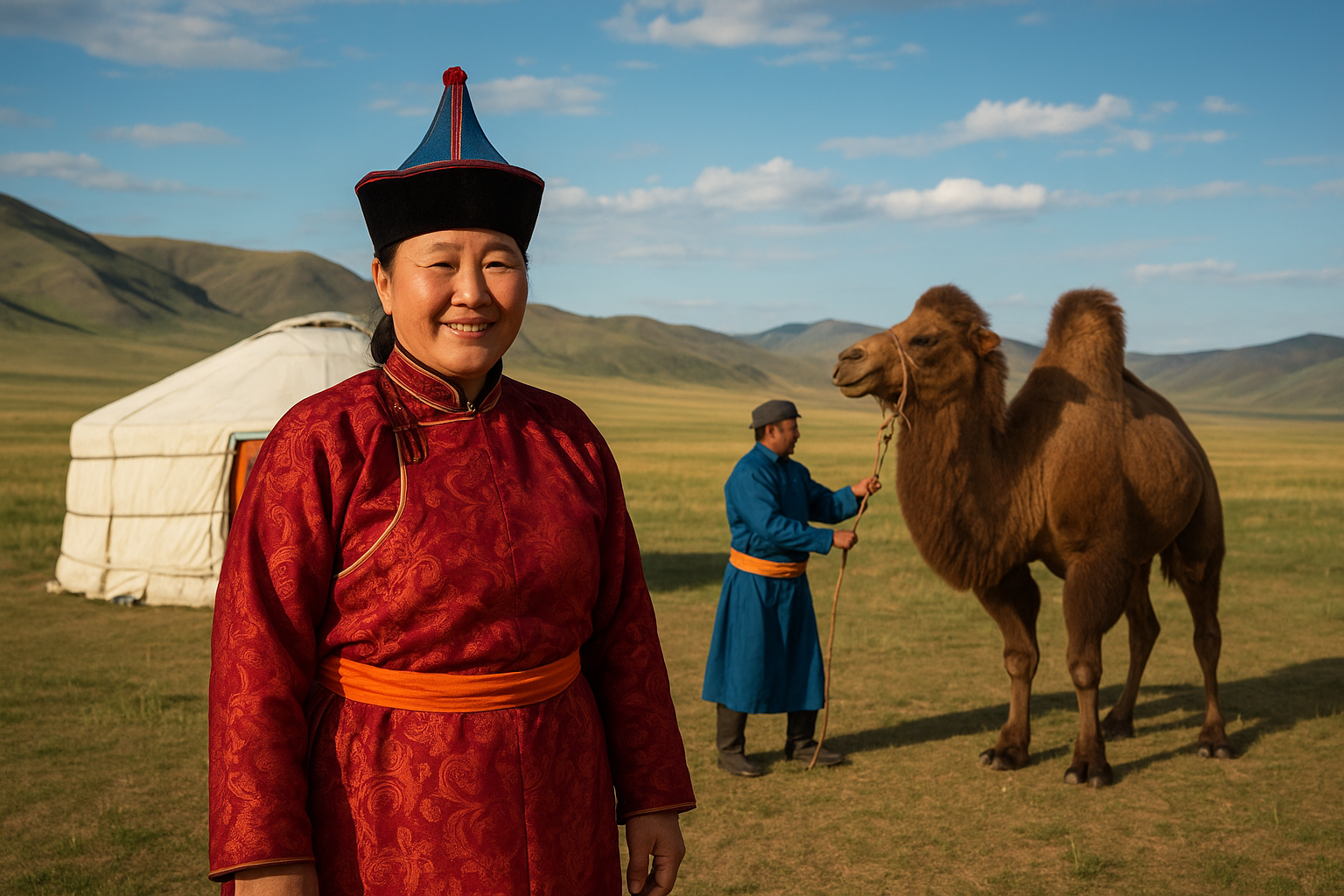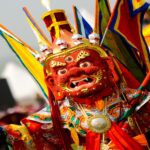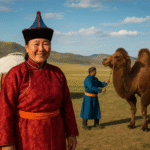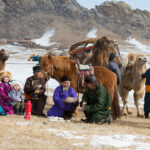Now Reading: Mongolian Culture: A Deep Dive into Nomadic Traditions and Modern Identity
-
01
Mongolian Culture: A Deep Dive into Nomadic Traditions and Modern Identity
Mongolian Culture: A Deep Dive into Nomadic Traditions and Modern Identity

Mongolia is a country where tradition and modern life meet in fascinating ways. Unlike many nations where ancient customs have faded into history, Mongolia has preserved much of its heritage while adapting to the changes of the 21st century. The wide-open steppes, the sound of the horsehead fiddle, the hospitality of families living in gers (yurts), and the strength of festivals like Naadam all reflect a culture that is both deeply rooted and continuously evolving.
To understand Mongolian culture is to explore the connection between people, nature, and history. From the spiritual practices of ancient shamans to the proud legacy of Genghis Khan, from the taste of traditional buuz dumplings to the vibrant art scene in Ulaanbaatar, Mongolia’s cultural identity is a living story that continues to inspire travelers and locals alike.
The Roots of Mongolian Culture
Mongolian culture is deeply connected to the nomadic way of life. For centuries, Mongolians have moved across the grasslands with their herds of horses, camels, sheep, and yaks. This lifestyle has shaped their traditions, values, and even their architecture. The ger (yurt), a circular felt tent, symbolizes mobility, practicality, and community, serving as the heart of Mongolian households.
The spirit of independence, resilience, and respect for nature stems directly from the nomadic heritage. Mongolians have always depended on the land and the seasons, adapting to the challenges of extreme winters and wide-open landscapes. These conditions nurtured a culture of hospitality, where visitors are always welcomed with warmth and generosity.
Language and Literature
The official language of Mongolia is Mongolian, written today in Cyrillic script, although the traditional Mongolian script is still taught and preserved. Literature and oral storytelling have played a significant role in preserving history and passing down wisdom. Long before printing presses, epic tales such as the story of “The Secret History of the Mongols” were shared orally, celebrating the life and conquests of Genghis Khan and his descendants.
Music and poetry are also essential cultural expressions. Long song (Urtiin duu), recognized by UNESCO, is one of the oldest forms of Mongolian traditional music. These hauntingly beautiful melodies reflect the vast landscapes and nomadic life. The morin khuur (horsehead fiddle) is Mongolia’s most iconic instrument, producing sounds that resemble a galloping horse or the wind sweeping across the steppe.
Religion and Beliefs
Mongolian culture has been shaped by a variety of belief systems, from shamanism to Buddhism. Tengrism, the ancient shamanistic practice of worshiping the eternal blue sky and nature spirits, was the original spiritual belief of nomads. With the spread of Tibetan Buddhism in the 16th century, monasteries became cultural centers of art, education, and spiritual life.
Today, many Mongolians practice a combination of Buddhism and shamanistic traditions. Rituals, festivals, and religious ceremonies remain an important part of daily life, often tied to respect for nature and ancestors.
Traditional Clothing
Mongolian clothing reflects the climate and practicality of nomadic life. The deel, a long robe tied with a sash, is the most traditional garment. Made of wool, cotton, or silk depending on the season, the deel is not only functional but also a symbol of identity. Each region has its own unique styles, patterns, and hats, often worn with boots designed for riding horses.
During festivals and ceremonies, Mongolian clothing becomes even more elaborate, with colorful designs, jewelry, and ornaments that showcase regional and tribal heritage.
Mongolian Festivals and Celebrations
Festivals are a vital part of Mongolian culture, bringing families and communities together. The most famous is the Naadam Festival, celebrated every July. Known as the “Three Manly Games,” Naadam features wrestling, horse racing, and archery. This tradition dates back to the time of the Great Khans, showcasing both physical strength and cultural pride.
Another important celebration is Tsagaan Sar, the Lunar New Year. Families reunite, share traditional meals such as buuz (steamed dumplings), and honor elders by performing the zolgokh greeting. These events highlight the importance of family ties and respect in Mongolian society.
Food and Cuisine
Mongolian cuisine reflects the nomadic lifestyle and harsh climate. Meals are hearty and meat-based, often including beef, mutton, and dairy products. Popular dishes include:
- Buuz – steamed dumplings filled with meat.
- Khuushuur – fried meat pies.
- Airag – fermented mare’s milk, a traditional beverage.
Dairy plays an important role, with cheese, curd, and dried milk products forming an essential part of daily diets. The cuisine is simple but nutritious, providing energy for life on the steppe.
The Influence of Genghis Khan
No discussion of Mongolian culture would be complete without mentioning Genghis Khan, the founder of the Mongol Empire in the 13th century. His legacy is deeply rooted in Mongolian identity, symbolizing unity, strength, and pride. While his empire once stretched across Asia and Europe, modern Mongolia remembers him not only as a conqueror but also as a nation-builder who established laws, trade routes, and a cultural foundation still admired today.
Modern Mongolia and Cultural Identity
Although Mongolia is rapidly modernizing, with growing cities and digital lifestyles, traditional culture continues to thrive. Many Mongolians balance modern education and careers while still honoring customs passed down through generations. Rural families maintain nomadic traditions, herding livestock and living in gers, while urban centers like Ulaanbaatar celebrate art, music, and cultural festivals.
The preservation of culture is seen as essential, with museums, schools, and artists working to keep traditions alive for future generations. Mongolian culture today is a remarkable fusion of ancient nomadic roots and global modernity.
Conclusion
Mongolian culture is one of the world’s most unique and enduring traditions. From the windswept steppes to the vibrant city life of Ulaanbaatar, the essence of Mongolia lies in its ability to honor the past while embracing the future. With its nomadic heritage, spiritual beliefs, music, festivals, and cuisine, Mongolia continues to inspire travelers, researchers, and those who seek to understand a lifestyle deeply connected to nature.
For those interested in exploring rich traditions, Mongolia offers more than just a destination—it provides a cultural journey through time, heritage, and resilience.






